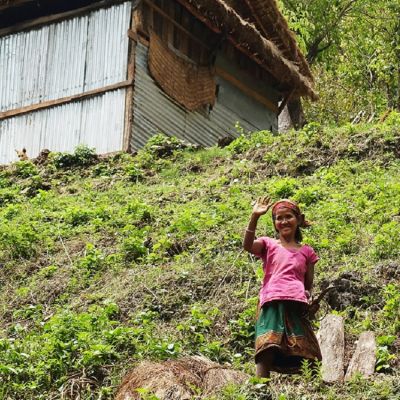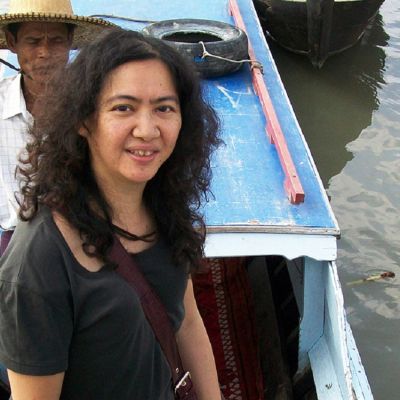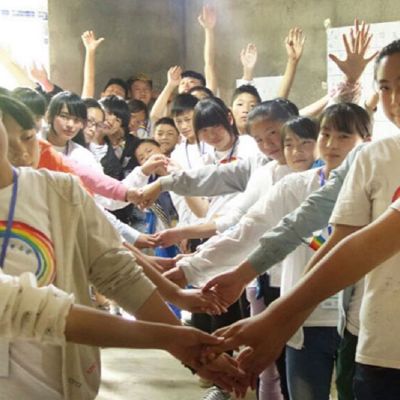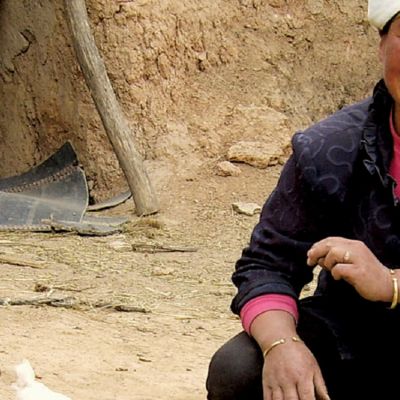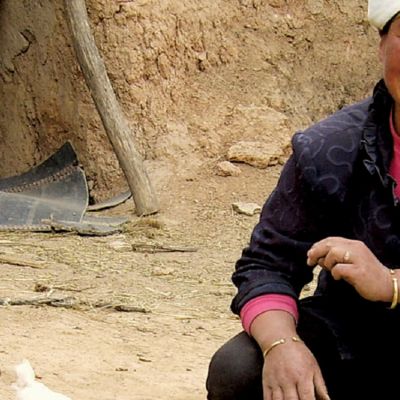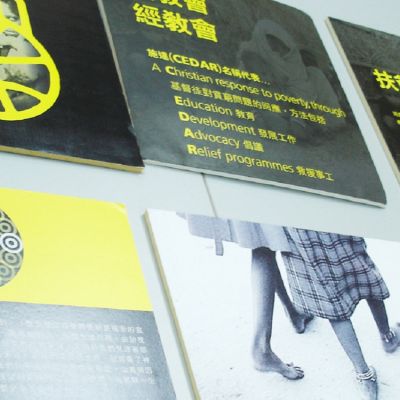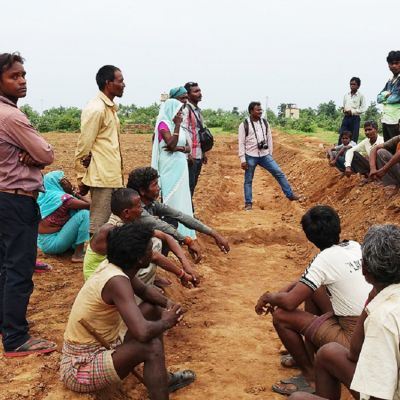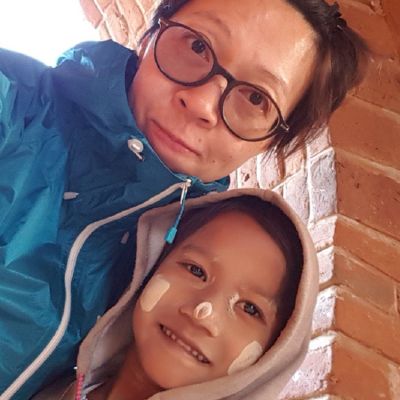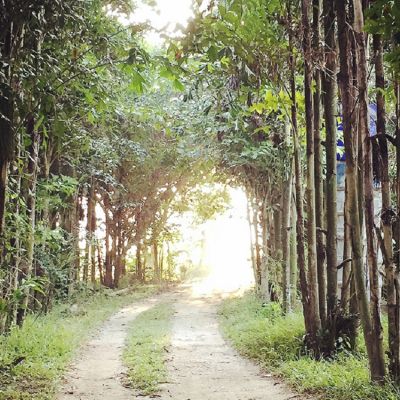Written and edited by: Jady Sit, Jojo Poon
At noon on 25 April 2015, Nepal was hit by the strongest earthquake in 80 years. Countless families lost their loved ones, homes, and properties. Approximately one third of Nepal’s population, 8 million, was affected by the quake. In the midst of ruthless disaster, people responded with love. Shortly after the earthquake, the world quickly pooled their resources to help. Yet, when global news coverage died down and emergency relief phased out, this was when we began to walk with the affected communities, helping them to rebuild and recover their communities sustainably for the long run.
In the last decade, CEDAR has been supporting partners’ community development work in mountainous communities in Nepal. Our partners mobilised community members to bring gradual changes to their communities, from hygiene improvement to equipping women’s livelihood skills, so they can live better lives. Though the 7.9-magnitude earthquake had destroyed most of the infrastructures and work in project communities, members and leaders of village committees villages assisted in aid distribution. Their help was vital to CEDAR and its partners to carry out post-quake response efficiently, and it also showed the fruits of development work – villagers’ knowledge and collaborative skills.
It all Started with Collaboration and Training
Samari Utthan Sewa (SUS), a partner of CEDAR, spent years in serving impoverished and marginalised groups, including the Dalit (meaning “the oppressed”, who belong to the lowest social status in the caste system) and women. After the earthquake, SUS has been serving the Dalits and locals in one of the quake-affected communities in Kabilas, Chitwan district.
The destruction was widespread: schools, health posts, irrigation and water supply systems were damaged. Over 45% of the community households had their houses partly or fully damaged. Despite the fact that most families have settled in shelters and infrastructures have been repaired, the quake has disturbed the community’s livelihood. SUS started a 2-year livelihood project in the community to help them become self-reliant and develop their community sustainably.
The local Dalits were mainly engaged in agricultural activities, so the earthquake has greatly affected their livelihoods. About 30% of the community only have food storage for more than three months. Farmers were also working individually without much collaborations with others to raise collective voice to claim their rights and improve their living conditions.
Community members’ participation is a key factor in development work. SUS provided training on kitchen garden and livestock management and supplied seeds of cash crops, pigs, and goats for villagers. Our partner also helped villagers, especially women, to form their self-help groups in order to build a support network for better development of the community and agricultural activities. Revolving fund was also set up for group members to expand their income generating activities, so they can achieve self-reliance through sustainable income.
Sita is a housewife and takes care of a family of four. The family lost their house during the earthquake, and they were left with the land. Sita hoped to improve the lives of her family through vegetable farming. She became a member of the women group facilitated by SUS and began learning about Integrated Pest Management (IPM). The IPM techniques aim to reduce the use of chemical pesticides and utilise environmental-friendly methods for pest control, restoring the productivity of the soil. Sita applied what she learned and grew different kinds of vegetables such as beans, sponge-gourds, and pumpkins. She successfully sold 20 kg of vegetables from her kitchen garden. “I learned new skills and farming became easier,” says Sita. She also realises that it motives her to work harder for better life by being in a group with peers.
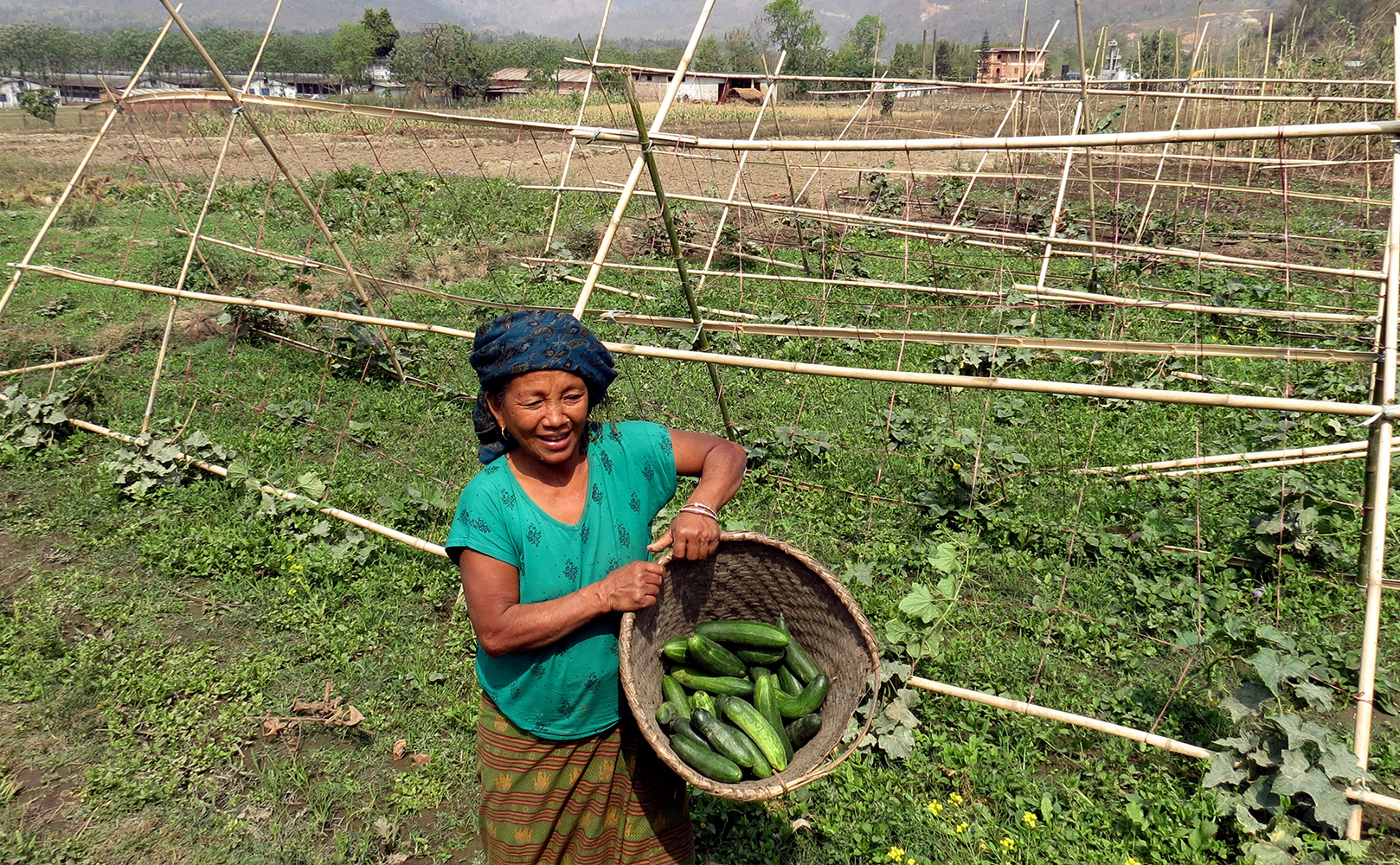
We hope that the project will not only improve the livelihood of individual households, but to drive the whole community forward for its future development. Hence, SUS assists the community to establish a Community Resource and Service Centre which will create an enabling environment for small land holders to exchange relevant farming knowledge and techniques, and offer shared resources for better crops and livestock production. The Centre promotes shared responsibility among community members to manage the lands and make use of local resources, so that the community and its land can live in harmony.
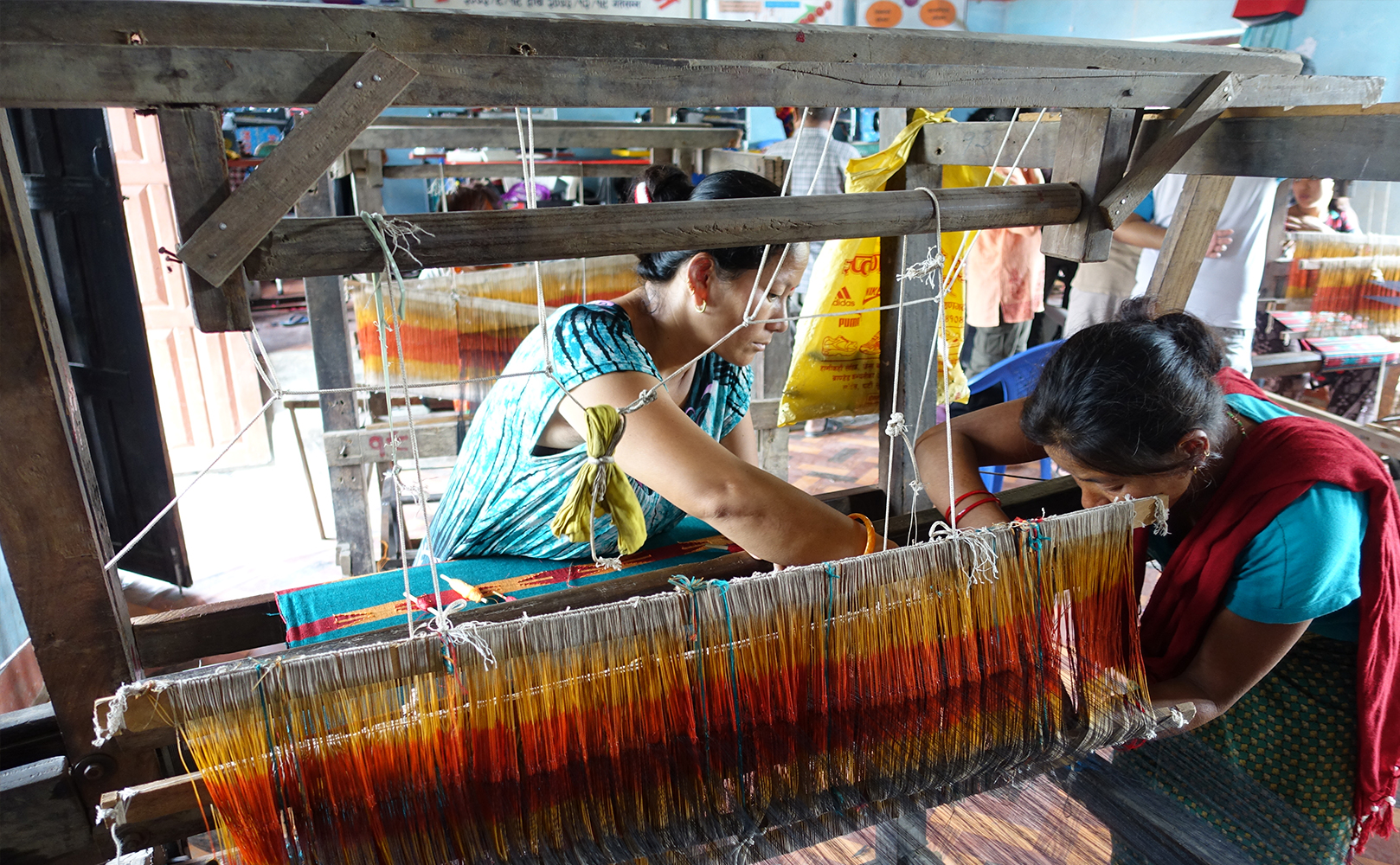
The Power of Self-help Groups
From SUS’s work, we can see that the formation of self-help groups facilitated the livelihood project and it became a significant force for community development. Let’s take a look at the work of Share and Care Nepal (SCN), also a partner of CEDAR, to learn how matured self-help groups can bring transformation to the community.
Sama (obscured) got married as a child and took up the burden of taking care of a family with four children. SCN came to Sama’s village and launched a women empowerment project. At first, Sama joined a training programme and later she began to participate in the Women Action Group. She became more engaged in different workshops and meetings. Sama has now started a small shop with the loan from the women’s cooperative, and she is able to pay her children’s education and daily expenses with her income.
Through various women’s groups, our partner educated women about their rights and encouraged them to participate and care for community matters, for example, improving community’s hygiene, constructing schools, and directing increased effort on anti-human trafficking in recent years to respond to the increased vulnerability of women after earthquake.
Today, Sama is the chairperson of the women’s cooperative and leads more than 200 members in strategy planning, writing proposals, and adopting policies. She expresses her gratitude, “I give thanks to SCN for making me a successful leader in the community. They have empowered and transformed many through training and workshops, and they have offered us exposures and support. I am now a role model in my village, demonstrating confidence in my own self and effective leadership for the group and cooperative.
Core of Community Development
By looking at the post-earthquake rehabilitation work or women empowerment project in Nepal, we can conclude that development work is not merely bringing outside resources into a community; more importantly, we should bring different members of the community, including the poor and marginalised, to work together on discovering local resources, planning and executing development plan, so that they can be united and empowered to sustain development achievements.
Fund raised for the Red Packet Campaign this year will continue to support community development work in Nepal. Give a red packet this Chinese New Year to send blessings to needy families in Nepal and help them to walk out of poverty!
Content of this issue
Written and edited by: Jady Sit, Jojo Poon At noon on 25 April 2015, Nepal was hit by the strongest earthquake in 80 years. Countless families lost their loved ones, homes, and properties. Approximately one third of Nepal’s population, 8 million, was affected by the quake. In the midst of ruthless disaster, people responded with love. Shortly after the earthquake, the world quickly pooled their resources to help. Yet, when global news coverage died down and emergency relief phased out, this was when we began to walk with the affected communities, helping them to rebuild and recover their communities sustainably for the long run. In the last decade, CEDAR has been supporting partners’ community development work in mountainous…
Written by: Lisa Chai (Former CEDAR colleague, currently involved in community development work in Myanmar) We are in the midst of a global refugee crisis. From Syria to Iraq, DR Congo to Yemen, and today we are witnessing the world’s largest growing refugee influx across the border of Bangladesh after violence broke out at northern part of Myanmar in Rakhine State in late August last year. As of 12 November 2017, the UN estimated that over 610,000 people have fled to Myanmar and the number is still growing. How do we react to all the violence and suffering in the world when their impact comes so strong and destructive? In the book of Lamentation we read of the…
“Left-behind Children”, a term describing over 60 million children in China who stayed behind with their grandparents in rural areas while their parents are working in the cities. While not all left-behind children suffer from poverty as their parents work far away from home, they all suffer the lack of parental care and love, and bear emotional burdens due to this long-term void. CEDAR’s partner in Sichuan, Chengdu Fuyi Community Services Centre, began supporting youths in quake-affected communities through caring and training programmes after the 2008 earthquake in Wenchuan, Sichuan. Two more earthquakes happened in Ya’an, Sichuan and Zhaotong, Yunnan in 2013 and 2014 respectively, leading to the expansion of our partner’s service to the youths in those…
Written and edited by: Jojo Poon I enjoy hearing stories and sharing of different development workers very much. If we put their sharing together, then we would get a complete picture of God’s purposes for the poor and the world. For this issue’s “Taking Action”, we invited CEDAR’s staff from different eras to share about their learnings and experiences along the way to put together a blueprint for CEDAR. “We were in Gansu’s Hui village working on the project… When we conducted home visits, we would ask: ‘Is anyone home?’, and if there were only women in the house, they would answered: ‘No!’” shares Alice, who served in Gansu, China. “We spent half a year to build relationship…
Interviewee: Alice Kwan (Former CEDAR Staff) Interviewed and edited by: Jojo Poon How far would you go for the poor? Would you visit the Guangdong industrial district alone to investigate sweatshop labour, or venture to Northwest China alone and live among the Hui people, or supervise earthquake rescue efforts while carrying a baby in your tummy and worrying about your husband’s safety who is responding at the frontline, or devote your family as a fulltime volunteer for four years, only to wake more hearts to care for the poor? That was Alice Kwan’s story. Alice had served in CEDAR for 12 years, 4 of which were spent supporting the community development projects in rural communities in Gansu, China….
Interviewees: Bonnie Ho (Administrative Staff) & Cee Foong Fung (Former colleague of CEDAR) Interviewed and Edited by: Jojo Poon Bonnie and Cee Foong had been serving CEDAR for over 20 years. Although they worked in the supporting role at the office, but that did not make them less knowledgeable about development work than others working in the same field. Such was evident during one of our regular morning meetings, the host led us to think in the shoe of the poor and we were to think about what their expected results for their community were after a project commenced. At the end, they both gave the most sensible answers. Bonnie has always been managing our accounting and finance,…
Interviewee: Fountain Chik (Senior Programme Officer) Written and edited by: Jojo Poon “Previously, I have worked in Tung Chung, Sham Shui Po, and Yuen Long before.” Many of us know that Fountain is the “Bangladesh guy” or “Prince of Bangladesh” at our office, but little have heard of his story before CEDAR. He says he began in community work locally. From different times of his service, there has always been one unified goal – to look for God’s footprint wherever he goes. When he was working in Tung Chung, Fountain was assisting community members on job employment as a social worker. Due to its long distance from business districts and to save on transportation fees, low-income residents in…
Interviewee: Grace Lai (Head of Partnership Development) Interviewed and edited by: Jojo Poon People take part in poverty relief works with different reasons. For Grace, the seed to care for the poor was sowed and rooted in her heart since her childhood years. “Every time the TV showed a commercial from a development aid organisations, I would be deeply moved… After I became a Christian, I wanted to do something meaningful. The moment came when I was changing jobs, where I recollected those old thoughts in my heart. I wanted to enter the poor’s community and live with them. Therefore, I began to realise this childhood dream by joining the development field.” About 10 years ago, Grace went…
Interviewee: Rebecca Lee (Senior Programme Officer) Interviewed and edited by: Jojo Poon Devotees in the development industry often started out with a calling derived from a unique personal experience. For Rebecca, our Senior Programme Officer, that special experience took place during her university years. She was pursuing a degree in International Politics, and one of the subjects was International Relations. It was her first time acknowledging the wide disparity between the world’s rich and poor, “I didn’t think God intended the world to work this way: while some people were starving to death, others enjoyed excessive abundance. This was clearly wrong. I wanted to do something to make the world a better place,” Rebecca says. Since then, to…



